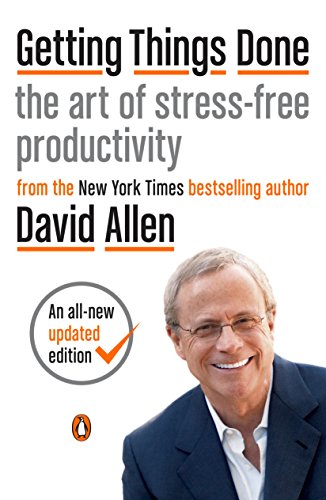

This article is an excerpt from the Shortform summary of "Getting Things Done" by David Allen. Shortform has the world's best summaries of books you should be reading.
Like this article? Sign up for a free trial here .
What is the GTD “clarify” technique? How does it work, and how does it help you stay organized?
The GTD “clarify” step allows you to understand your “capture” step. With GTD clarify, you work on establishing the right next steps.
GTD Clarify: Step 2 in the GTD System
The next step is to decide the intended outcome for each item and figure out what the immediate next action is to make progress toward that outcome. The “next action” is the immediate next physical step you can take toward a project’s completion. For example, if the item says “schedule meeting,” you need to decide what you need to do next to schedule that meeting: Check your availability? Book a conference room? Email meeting requests?
This front-end decision-making boosts your productivity because it forces you to determine how to tackle an item when it lands in front of you rather than waiting until you’re up against a deadline. Clarifying next actions turns seemingly daunting tasks into bite-sized actions you can easily complete and feel success with.
Clarify Everything in Your In-Tray
Now that your mind is empty and your in-tray is probably overflowing, it’s time to work through everything—quickly, decisively, and diligently.
It’s easy for this GTD clarify/processing stage and the next step, organizing, to get entangled. If you’re implementing the GTD system as you read this, you may want to read this chapter and the next before moving forward on clarifying your “in” items.
Here’s the big picture of how this works: First, in Step 2, decide what action each item needs—for some items, the action will be the next thing you need to do to accomplish the task (for example, call your mechanic), and for others, it’ll be to delegate the task or file the item for later. If there’s anything you can throw away or complete in less than two minutes, do it now. Otherwise, label each item according to what you decide. Then, in Step 3, you’ll physically sort everything into their appropriate files and lists.
Back to Step 2: Emptying your in-tray might seem like a daunting task, so follow these guidelines to get through it.
The GTD Clarify Basics
The GTD clarify has two basic rules for how to go about clarifying the system. Follow these two rules plus the tips and techniques.
GTD Clarify Rule #1: One at a Time, Starting at the Top
There are two main rules for GTD Clarify. In order to get through this pile, you need to treat each item equally: Pick one up, decide what to do with it, and mark it accordingly (e.g. calendar, Next Actions list, Projects list).
You may be tempted to do an “emergency scan” of your tasks, quickly perusing for the most urgent, enjoyable, easy, or interesting item to tackle first. But that makes it easy to neglect certain items and put off making a decision about them.
The most effective way to empty your in-tray is to work through each item from the list top-down (or, if you prefer, flip the in-tray upside down and work from the top-down so you start with the first items you put in the tray).
Additionally, assessing just one item at a time forces you to dedicate enough attention to decide what to do with each one.
The only exception to this is if you’re the rare person who’s more effective and efficient when you multitask. Some people can only make a decision about an item if they briefly shift their attention to something else and then come back to it. If this is you, take two or three items out at a time, but be sure to make a decision about each one within a minute or two of pulling it out.
GTD Clarify Rule #2: Never Put Anything Back Into the In-Tray
Another key to getting through your in-tray with GTD clarify is to force yourself to process each item when you pull it out. Don’t put anything back in the in-tray or to the side undecided, or else you’ll finish emptying your in-tray and still have another pile to go through.
Research proves that “decision fatigue” is real—people lose a little bit of their limited brain power and energy with every decision they make. Paradoxically, making the decision to leave an item undecided wears away at your mental energy without achieving anything productive.
Non-Actionable Items
Items that don’t require any immediate action can go into the:
- Trash
- Reference pile
- Pending pile
Trash: You probably threw away a lot of stuff while capturing, but you’re bound to come across more trash as you process your in-tray. In fact, as you GTD clarify everything you’ll probably create stricter boundaries to what kinds of tasks you take on in the future.
Overall, whether you err on the side of throwing things out or keeping them depends on what will put your mind more at ease—and how much space you have to store things. Digital storage offers the freedom to keep as much as you want and navigate it with the search function, but don’t take this as permission to keep things indiscriminately.
Reference pile: Label items that are purely informational (like a note from HR outlining a new company policy) as “reference” and set them aside in their own pile. You’ll put them into reference files in the next step.
Pending Pile: Label items that you don’t need to act on now but might want to follow-up on later with “incubation.” Put these in a Pending pile; in the next step, you’ll sort these into a Someday/Maybe list or create reminders in a tickler file or on your calendar.
GTD Clarify and Next Actions
A key piece of Getting Things Done is to figure out what the next action for every actionable item is. This has a psychological benefit—it reduces a daunting task into a smaller action that seems much easier to do.
It may sound fairly simple to decide on next actions for most items, but it can be deceptively challenging to boil it down to the immediate next specific action.
For example, if an item says “clean the garage,” at first it seems that cleaning the garage is the next action. But then you remember the old refrigerator in the garage that you want to offer to a friend. So your next action is actually “call John to ask if he wants the refrigerator.”
Similarly, an item as simple as “schedule meeting” doesn’t actually specify whom you’re inviting to the meeting, whether you’re inviting them via phone or email, and if you need to book a conference room for the meeting. Using GTD clarify for the next physical action for each item gets all the thinking out of the way so that when you have time to pick up your Next Actions list and do a task, all you have to do is sit down and do it.
Keep in mind that merely making a decision can’t be a next action—there’s typically a physical activity that will assist your decision-making, such as consulting someone else or brainstorming ideas. That activity would be your next action.
Once you have the next action figured out, in the GTD system you can:
- Put in on your Projects list
- Do it
- Delegate it
- Defer it
GTD clarify is only Step Two in the Getting Things Done system. GTD clarify will help you understand and process the next steps.

———End of Preview———
Like what you just read? Read the rest of the world's best summary of David Allen's "Getting Things Done" at Shortform .
Here's what you'll find in our full Getting Things Done summary :
- Why you're disorganized and your to-do list is a mess
- The simple workflow you can do everyday to be more productive than ever
- How to take complicated projects and simplify them






